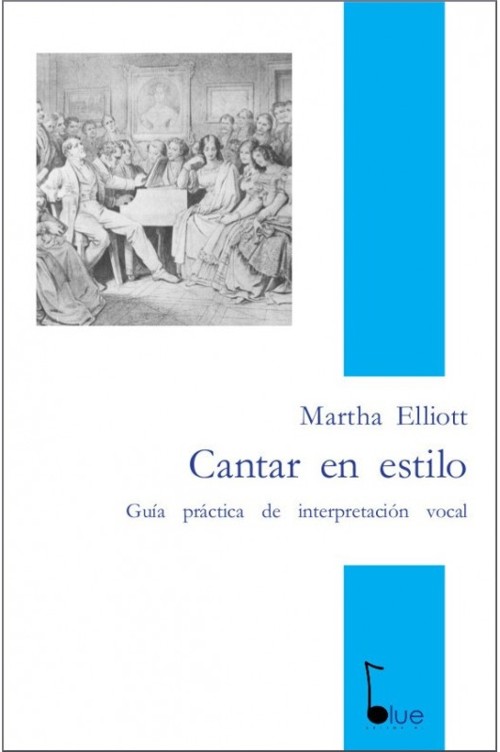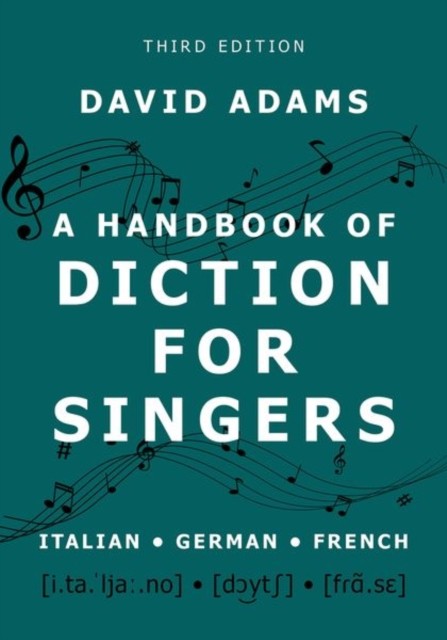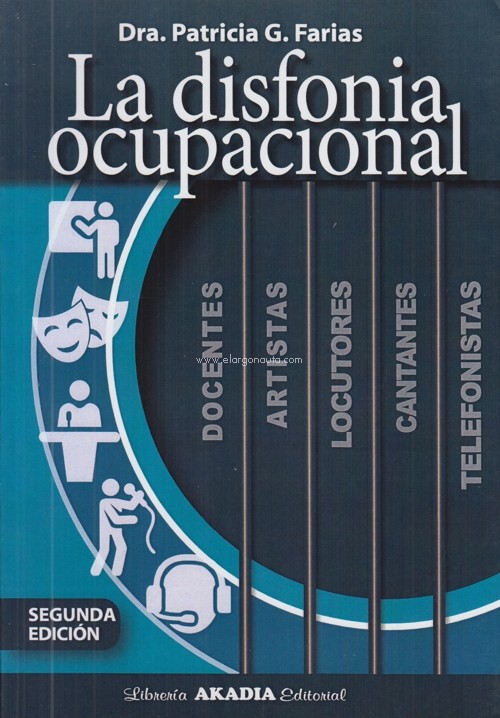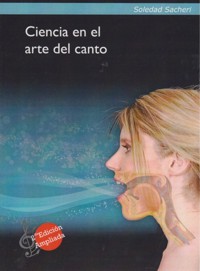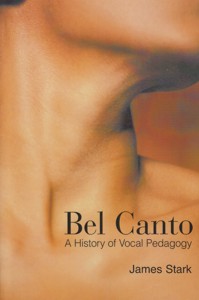
Bel Canto: A History of Vocal Pedagogy
Stark, James
University of Toronto Press. 2008Ficha técnica
- EAN: 9780802086143
- ISBN: 978-0-8020-8614-3
- Editorial: University of Toronto Press
- Fecha de edición: 2008
- Encuadernación: Rústica
- Dimensiones: 15x23
- Idioma: Inglés
- Nº páginas: XVI+324
No disponible temporalmente
Disponibilidad sujeta a la información del editorPVP. 58,70€
Añadir a la Lista de deseos
In this well documented and highly readable book, James Stark provides a history of vocal pedagogy from the beginning of the bel canto tradition of solo singing in the late sixteenth and early seventeenth centuries to the present. Using a nineteenth-century treatise by Manuel Garcia as his point of reference, Stark analyses the many sources that discuss singing techniques and selects a number of primary vocal "problems" for detailed investigation. He also presents data from a series of laboratory experiments carried out to demonstrate the techniques of bel canto.
The discussion deals extensively with such topics as the emergence of virtuoso singing, the castrato phenomenon, national differences in singing styles, controversies regarding the perennial decline in the art of singing, and the so-called secrets of bel canto.
Stark offers a new definition of bel canto which reconciles historical and scientific descriptions of good singing. His is a refreshing and profound discussion of issues important to all singers and voice teachers.
"'Bel Canto' is an extraordinarily well written, carefully researched, and meticulously documented work that demonstrates the author's vast knowledge and mastery of historical and current pedagogical literature. Uniquely authoritative, highly informative, it is a monument in its field and highly recommended to all students of singing."
(Richard Dale Sjoerdsma, "Journal of Singing")
"In 'Bel Canto' Stark has brought together the worlds of voice teacher, laryngologist, and acoustician in a highly readable and informative resource. Never before has this information benn more accessible. This is a treasure trove for all those interested in the human voice, and helps them to 'reason why' - with specific information, old and new."
(Darryl Edwards)
CONTENIDO:
Preface
Introduction: The search for bel canto
1. The "coup de la glotte": a stroke of genius
-Manuel Garcia II
-The larynx
-Garcia's theory of glottal closure
-Garcia's theory of the "coup de la glotte"
-The great controversy over the "coup de la glotte"
-Modern views of vocal onset
-Modern views of glottal settings
-Closed quotients and patterns of vibration
-Neuromuscular control systems
-Conclusions
2. "Chiaroscuro": the tractable tract
-"Chiaroscuro" as an ideal voice quality
-The early teatrises
-Garcia's theory of voice source versus vocal tract
-"Voix sombrée ou couverte"
-"Voce aperta" and "voce chiusa"
-Helmholtz's acoustical theory
-Modern formant theory
-Resonance imaginery
-Conclusions
3. Registers: some tough breaks
-The problem of registers
-The two-register theory of the old Italian School
-Countercurrents to the two-register theory
-Garcia's theory of the main registers
-"Voix mixte" and "mezza voce"
-Garcia's auxiliary registers
-The aftermath of Garcia's register theory
-Register theory and modern voice science
-The primary registers
-Covered singing
-Belting
-Mixed registers
-Acoustic registers
-Auxiliary registers
-Conclusions
4. "Appoggio": the breath be dammed!
-The concept of "appoggio"
-The early treatises
-The Eighteenth-Century tutors
-The Garcia school
-The Mandl-Lamperti school
-"Stauprinzip" and "Minimalluft"
-Modern views of breath mechanics
-Subglottal pressure, intensity, and airflow
-The "messa di voce"
-Neuromuscular control systems
-Conclusions
5. Vocal tremulousness: the pulse of singing
-The problem of vocal tremulousness
-The early treatises
-Eighteenth-Century sources
-Nineteenth-Century sources
-Modern views of the "trillo"
-Modern views of vibrato
-Neuromuscular origins of vibrato
-Rate, extent, intensity, and timbre
-Respiratory control of vibrato
-Trills and floridity
-Vibrato and expressiveness
-The presence and perception of vibrato
-Conclusions
6. Idiom and expression: the soul of singing
-Problems of idiom and expression
-The art of diminutions
-Caccini's affective vocal devices
-"Meraviglia", "sprezzatura", and "grazia"
-The development of idiomating singing
-Voice quality
-Voice articulation
-Floridity
-The trill
-"Tempo rubato"
-Categories of expressive song
-Modern views of vocal idiom and expression
-Word-note-"Tone" relationships: a case study
-Conclusions
7. Bel canto: context and controversy
-Réprise: toward a definition of bel canto
-The establishment of the old Italian School of singing
-The castrato phenomenon
-National differences in singing styles
-The perennial "decline of the art of singing"
-Coda: the "secrets" of bel canto
Appendix: the Groningen protocols
-Introduction
-Glottal settings
-Closed quotients
-Airflow rates
-Subglottal pressures
-Voice quality
-"Messa di voce"
-"Mezza voce"
-Respiratory control of vibrato
-Conclusions
Notes
References
Index


